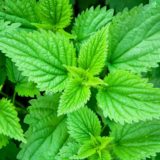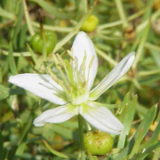Plants Smoked by Tribes for Psychoactive Effects

Plants That Are Psychoactive When Smoked
Technically, nearly any plant on Earth can be dried out and smoked, however, of the very many plants, only some are psychoactive. Still, many plants known to man have been smoked at one point or another, whether they induce psychoactive effects or not. Some of these plants are still smoked today, while others rest in peace with history. Sometimes plants are combined in order to create what cultures know as “smoking blends.” Many smoking blends are mentioned in religious texts, or are used for shamanic purposes. Many smoking blends are also used for recreation, and very common in social settings. No matter the use, all smoking blends begin by combining ingredients.
List of Plants That Provide Psychoactive Effects When Smoked
Plants can be smoked alone or as a part of a smoking blend. These are some of the most commonly smoked plants within tribes around the world (and throughout history) for their psychoactive effects.
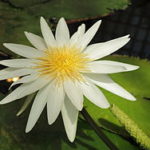 Nymphaea ampla (Blue Water Lily)
Nymphaea ampla (Blue Water Lily)
This plant is very common along the Nile and was popularly used in Ancient Egypt. It is also very common in Mexico and Central Amercia. It has been smoked for its sedating, relaxing properties. It is also reported to have other hallucinogenic, recreational values, but is most commonly used as a marijuana substitute today (both as a tea and as a smoking blend).
Cestrum laevigatum (Dama da Noite)
Dama da Noite grows native in Brazil and Chile, and is very commonly used among the natives of these regions. The Mapuche use this plant, which they call Palqui, as a smoking substitute for marijuana.
Datura metel
Datura is popular among many tribes around the world. It is very commonly used for recreational and ceremonial intoxication. It is typically not smoked alone, but in combination with cannabis or tobacco. It was even smoked in ancient cultures (Arabians, Chinese, and many others).
Cymbopogon densiflorus (Esakuna)
This plant is well-known by the Tanzanian Indians, whom employed it as a medicine and recreational drug. It can cause dreams and prophecy, and thus is common among shaman and medicine men of the area. The flowers are dried and smoked alone or in a smoking blend, most frequently with tobacco.
Hyoscyamus niger (Henbane)
The Henbane plant was very popularly used throughout ancient Greece and Rome, as well as the Middle Ages. Although the dried leaves and herbage are smoked or used in a smokehouse, interestingly enough, the seeds are also smoked.
Salvia divinorum (Hierba de la Pastora)
The Salvia drug is a historical icon among the Aztec tribes, and is especially popular among the Mazatecs. It is a powerful hallucinogen which, in fact, has been used as a substitute for psychedelic mushrooms. Salvia is smoked to induce strong visual hallucinations.
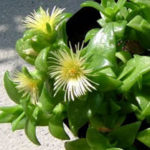 Mesembryanthemum expansum (aka Sceletium tortuosum)
Mesembryanthemum expansum (aka Sceletium tortuosum)
Also known as Kanna, or Channa, or even Canna, this plant has a variety of uses throughout South Africa. The leaves and roots of the plant are typically dried and smoked for their sedative and intoxicating effects. Ancient use by the Hottentots most likely included inducing strong visions and hallucinations, however, hallucinogenic preparation is not common today.
Mitragyna speciosa (Kratom)
Kratom can be used many ways, from a ceremonial tea to a chew or extract. The leaves of the Kratom plant are very commonly smoked throughout Thailand and Malaysia, being used as a substitute for opium.
Leonitis leonurus (Lion’s Tail, Wild Dagga, Dacha)
This herb is found native in Southern Africa and was more popularly used in ancient times. It has been found still used by the Hottentots and bush people of today as a narcotic. The leaves and buds are dried and smoked as a substitute for cannabis. Sometimes, it is smoked alone, other times it is mixed with tobacco or other herbs.
Sida acuta (Malva Colorada, Chichibe, Axocatzin)
Known by many names, this plant is native to Mexico (specifically flourishing along the coast of the Gulf of Mexico). It is commonly smoked for its mild stimulating effects, and sometimes used as an alternative to marijuana.
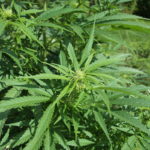 Cannabis sativa and Cannabis indica
Cannabis sativa and Cannabis indica
Marijuana is one of the most commonly smoked plants in the world. There are ancient texts describing rituals of smoking marijuana for religious purposes dating back more than 4000 years ago. The plant’s psychoactive effects are exploited via smoking throughout a number of ancient cultures in history. Today, it is cultivated in nearly every region of the world.
Cacalia cordifolia (Matwu, Huilca)
This plant is native to Mexico and is commonly employed as a cure for sterility and as an aphrodisiac. The dried herbage is smoked by a variety of tribes.
Scopolia carniolica (Nightshade)
This nightshade has a rich history throughout European folk medicine, and as an intoxicant. It is used as an aphrodisiac and as a beer additive. The dried herbage is also very commonly smoked, sometimes alone, and sometimes mixed with other herbs.
Petunia violacea (Shanin, Petunia)
The Petunia is mostly known for its pretty flowers, and although it may have been native to South America, it is cultivated around the world today. The Indians of Ecuador are known to smoke dried Petunia herb.
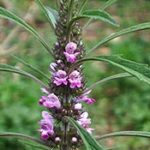 Leonurus sibiricus (Siberian Lion’s Tail, Marijuanilo, Siberian Motherwort)
Leonurus sibiricus (Siberian Lion’s Tail, Marijuanilo, Siberian Motherwort)
This plant goes by many names, but all of them are known for their psychoactive effects. Leonurus is native to Asia, mainly China and is well-known throughout Chinese medicine. It is now also very common throughout the Amazon and Brazil after being transplanted. The flowers and leaves are dried and smoked either alone or with a smoking blend.
Helichrysum foetidum (Straw Flower)
Straw Flower grows native in Zululand, a territory in South Africa. The native medicine men, shaman and doctors use the herb to induce trances. It is most commonly inhaled to induce its effects.
Lobelia tupa (Tupa, Tabaco del Diablo)
This intoxicating plant is common in folk medicine of the Mapuche Indians in Chile. There are many other tribes throughout the Andes whom have employed the leaves as a smokable intoxicant or medicine.
Tagetes lucida (Yauhtli)
This is one of the favorites of the Huichol Mexican tribe. It is used in religious rituals and ceremonies to induce visions (or to enhance visions). It is commonly smoked alone, but also smoked as a part of a mixture with tobacco.
Calea zacatechichi (Zacatechichi)
This plant is mentioned throughout Chontal literature and stories as a medicine. Specifically it was used as an aperitif and a febrifuge. Zacatechichi is also used as an astringent for treating diarrhea. As a smokable cigarette, it is enjoyed as a leisure activity.
Smoking Plants for Psychoactive Effects
Smoking is a great human tradition and religious ritual, despite how bad it may be for one’s health. Smoking has been present in many shamanic rituals and practices around the world. Many tribes in religions have used plants in a variety of smoking blends for ceremonial use. And of course, smoking will always remain popular among certain recreational users. The tribal practice of smoking some plants will even trump some laws, as governments have been very lenient with recognizing a religious history of a plant. Although ayahuasca is not smoked, it is one of the most excellent examples of an otherwise illegal botanical concoction being made available to Native Americans in the United States purely due to their historic cultural use of the drink. Smoking plants will at least always remain popular during certain tribal ceremonies in certain parts of the world.
Disclaimer: BotanicalShaman.com does not claim smoking is safe or harmless. In fact, smoking any plant is known to be carcinogenic.


